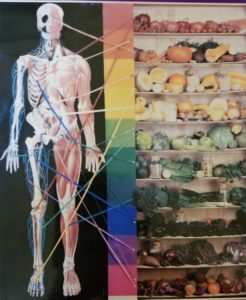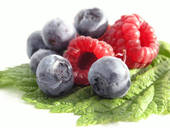Quercetin:Quercetin is one of many powerful flavonoids that are part of a larger classification collectively termed phytonutrients. Phyto = plant and nutrients = nutrients. Phytonutrients contain phytochemicals, meaning plant-derived molecules that are highly physiologically active. These are what our body needs to survive and thrive. Phytotherapy means using phytonutrients for therapeutic purposes. For example, this article explains the mechanics of why Phytotherapy is effective for hormonal balance, and the difference between using chemicals for hormonal balance. Pages 175-180 of “The Paw Paw Program – A Natural Approach to Cancer” by Lorene Benoit, MHH, CHC, discusses many phytonutrients. Some commonly known phytochemicals/phytonutrients:Carotenoids, organosulfur compounds, indole 3 carbinols, well-known vitamin anti-oxidants, such as A, C and E, polyphenols and flavonoids. Flavonoids are a large group of naturally occurring phenolic compounds. Some of these are: xanthones, carotenoids, lycopene, lutein, quercetin, rutin, anthocyanins, anthocyanidines, proanthocyanidines, curcuminoids, indole 3 carbinols (I3C’s), astaxanthin, diindolymethane (D2M), ascorbigins, glucosinolates, isothiocyanates, betulinic acid, resveratrol, lignans, epigallocatechin, acylfloroglucinols. As you can see from above list, Quercetin is just one of many phytonutrients. It is a pentahydroxyflavone having the five hydroxy groups placed at the 3-, 3′-, 4′-, 5- and 7-positions. This chemical identification is not as important to me, as knowing that quercetin is one of the most abundant flavonoids in vegetables, fruit and wine. These foods are some of the best sources of dietary flavonoids, including quercetin:
PLUS: herbs are powerhouses of concentrated phytonutrients. A few that are high in quercetin are: gingko biloba, garcinia, acai, hawthorn, grapeseed, Buckthorn, Yellow Loosestrife . For example, Yellow Loosestrife or Lysimachia vulgaris contains the following active ingredients and substances: The dried leaves and flowers contain tannins, flavonoids (rutin, myricetin, quercetin, and kaempferol), triterpene saponins and benzoquinones. The whole plant contains vitamin C which explains its uses in the past as a remedy for scurvy. Take away:All phytochemicals have potent antioxidant and anti-inflammatory activities. There are MANY known that have been chemically documented, and likely many not yet identified or named. Different ones feed different organs of the body, which is why we need them all. The medical paradigm is isolating ingredients versus the natural paradigm of using whole foods and plants. These are more easily identified and assimilated by the body. This is why I use mostly herbs for supplementation purposes. Most vitamins and minerals should also include herbs or foods in their bases for the same reasons. This is why I recommend eating a rainbow of colours of vegetables and fruits daily.
|
|

